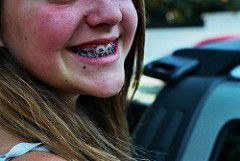
I know it seems a touch strange to compare chiropractic care to dental care, but bear with me; soon you’ll be able to see the connection. Something I run into a lot when it comes to chiropractic is the statement “once you start seeing a chiropractor, you are roped in for life”. Not true, well sort of! It really should be altered to say “once you begin seeing a chiropractor, you will likely continue a lifelong relationship, on your own schedule”. What I mean by that is after that initial phase of care, any additional chiropractic care is truly up to the patient, or in this case the patient’s fur parents. Let me explain a bit more.
The goal of chiropractic is to remove any interference within the nervous system by addressing structural shifts and returning them to within normal, thereby restoring joint flexibility, mobility, muscle tone, and range of motion. In the initial phase of care, chiropractic adjustments are administered more often in order to help re-establish all of the things listed above. The body itself requires time and consistency in order to make a more permanent change, otherwise the likelihood of returning to the previously established pattern is high. Rarely, if ever, will one or two adjustments “fix” the root cause of any problem.
A structural shift takes time to occur. For a moment, let’s consider a set of crooked teeth. When we are born, our teeth are not naturally crooked (usually), they develop that way over time because of the jaw and the way we use them. We do not go to bed one evening with straight teeth and then wake up with them being malaligned. Similarly, when braces are put on said crooked teeth, it takes much longer than one day for them to straighten. In fact, it often takes years for teeth that have shifted to return to a straightened position.
Once that set of braces is removed and those pearly whites revealed, the first thing an orthodontist will do is create a retainer of some sort in order to help maintain those straightened teeth. The retainer is often required to be worn daily for some time, and then eased down to nightly, every other night, and then weekly. Now all of this is done to maintain all of the work the braces had been doing for the past several years. If one forgets to wear his or her retainer, or just decides it is no longer necessary, the teeth will begin to shift back to their starting position. Despite having gone through years of straightening, these teeth will always have a tendency to try and return to their original form. After a few weeks of not wearing a retainer, the first time trying to re-wear it will show any and every patient how much the teeth have shifted. It’s usually pretty painful and a healthy reminder that when the orthodontist says to wear it weekly, he means to do just that. When I asked my own orthodontist how long I’d need to wear my retainer, he bluntly said “forever”. I can tell you from my own experience, it’s been thirteen years since my braces were removed and I still wear my retainer weekly.
Braces and ChiropracticLet’s return to the topic at hand of the spinal structural shift. Much like our teeth, our spine does not become “abnormal” overnight. It takes time, and often years of daily micro-traumas to alter that normal structure. When this happens, a structural shift has occurred. Even after that happens, it often takes years more before any symptoms of a shift arise. So after a patient has gone through the initial phase of care to help restore that normal, much like we see with teeth, even though a change has been made to the spine, the likelihood of that change becoming permanent after only a few months of chiropractic care is unlikely. The importance of wearing that retainer, of getting adjusted on a protective level, cannot be stressed enough. All too often I’ll see patients religiously while there is a notable problem, and once that problem is resolved, the patient no longer comes in until another problem comes along. What I want to stress is how much easier it is to maintain and protect normal structure after that initial phase of care, rather than wait until something happens to throw everything off and require a brand new initiation phase. Adjustments regularly throughout the year can help maintain a better quality of life for your animal, and much like in the case of braces, can help prevent having to start from square one again!
Photo Credits
Adventures in Orthodontics, Part 5; or, 1 year, 1 month, 10 days via photopin (license)
Mauve Braces via photopin (license)
Invisalign via photopin (license)

